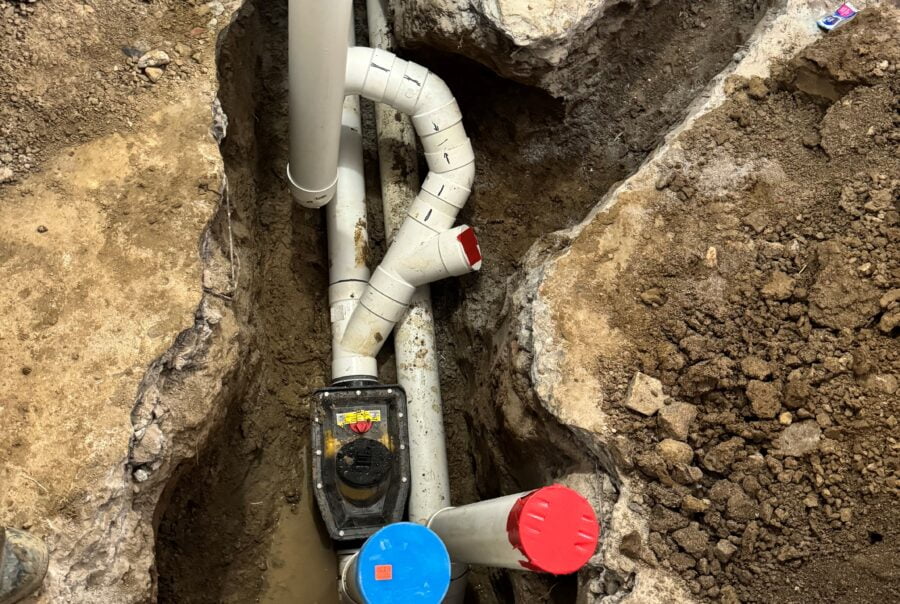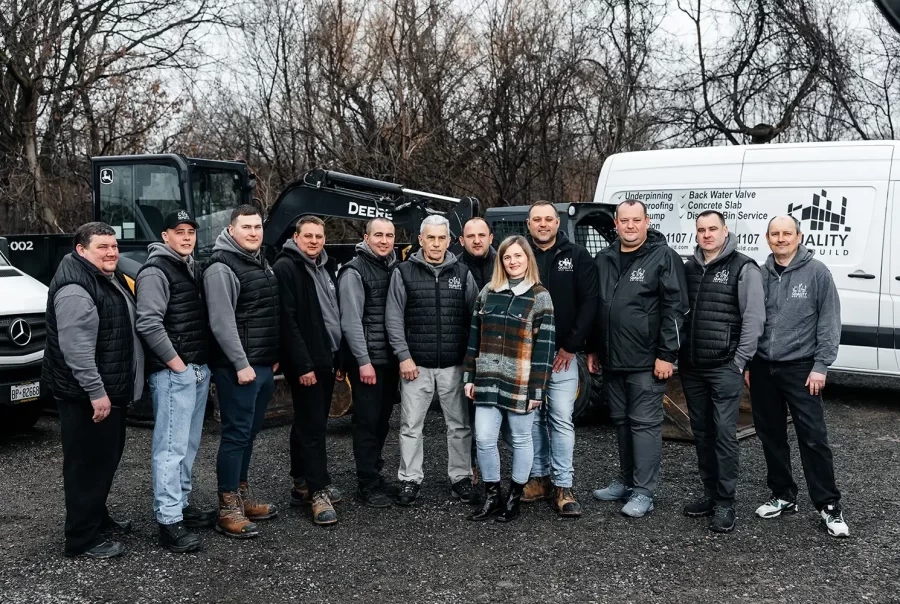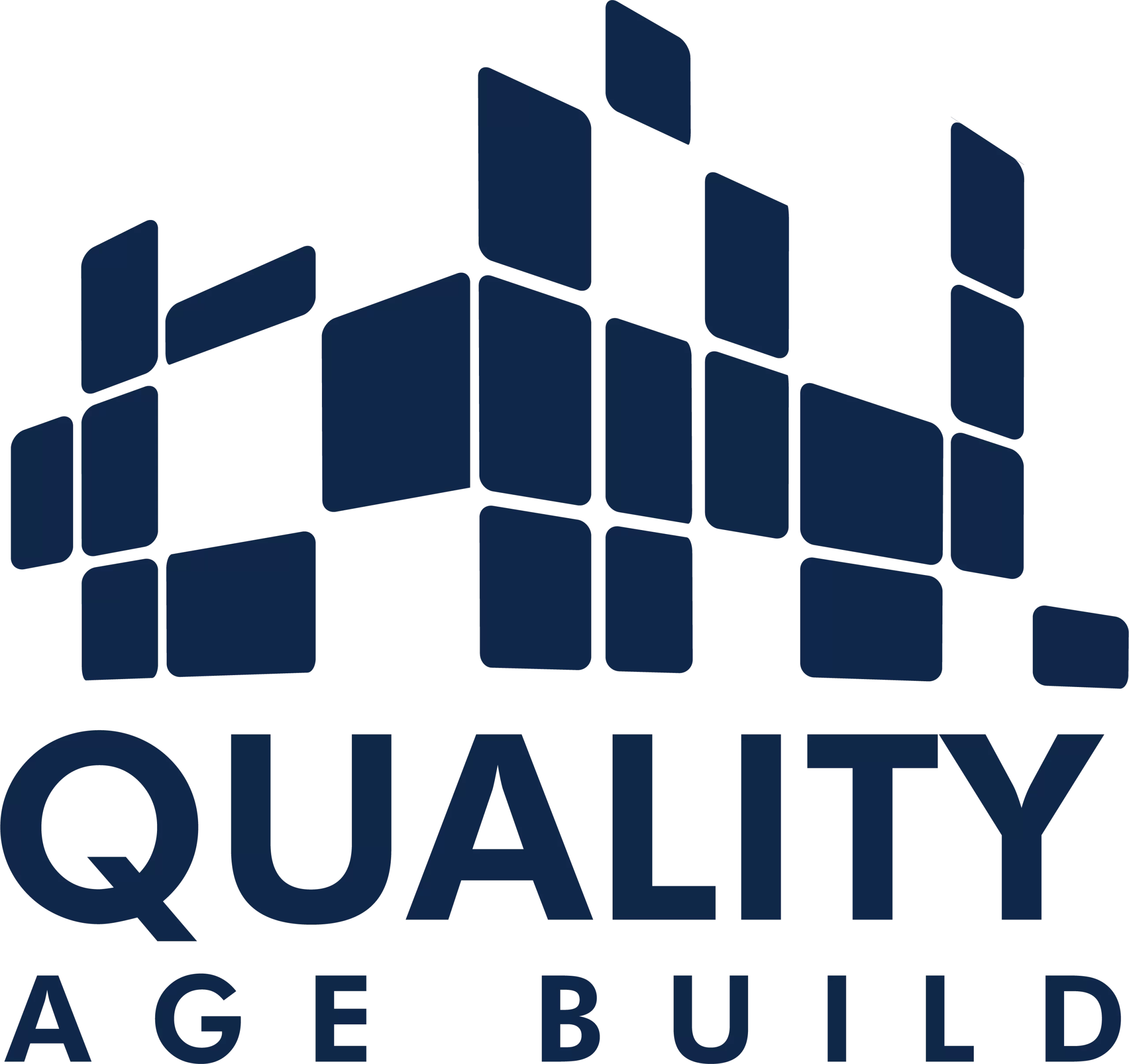When buying a house, future owners are primarily attracted to the quality of interior repairs, the appearance of the facades, the absence of visible damage, and other apparent signs of the building’s condition.
However, invisible details are no less critical for a comfortable and safe stay. These include sewerage and its elements – particularly the backwater valve.
In this material, Quality Age Build experts will help you understand this device, how it works and how much does it cost to install a backwater valve.
What is a Backwater Valve?
A backwater valve is a locking device designed to block backflow sewer drains. Installing one in various types of buildings, including private and apartment buildings and office premises, is advisable.
Due to its structure, this device allows sewage to flow out of the building but does not allow it to flow back. Backwater valves are often installed in areas of the sewer system located below the foundation level – for example, in the basement.
What Is the Price Range of Backwater Valves?
Backwater valve cost depends on several factors, including the type of device needed and its size. On average, its price varies from $600 to $1200.
The backwater valve installation in Toronto is calculated separately. It depends on the complexity of the work performed and other factors that we will discuss below. Installation of this device will cost a homeowner between $2,000 and $5,000.
Advantages of Installing a Backwater Valve
Considering the considerable costs involved, it is not surprising that home and office owners may question the wisdom of installing a backwater valve. However, we assure you that this investment is justified. Here are some benefits of installing a valve in your sewer:
- Saving finances. However, the backwater valve installation cost is often an unplanned expense that will ultimately save money. You don’t have to spend money on emergency repairs to plumbing, and in some cases, the entire house – if it is flooded with dirty water from the sewer.
- Protecting the premises from infection. One can only imagine how many harmful bacteria and other microorganisms are contained in sewage. The backwater valve will prevent their entry into the building and thus protect it from infection.
- Insurance cost reduction. If you install a backwater valve, your insurance company will likely consider it a risk mitigation factor. After all, the device is designed to protect the premises from flooding.
Are you still trying to determine if the backwater valve installation is justified? To verify the effectiveness of this device, we suggest delving into its operation features.
How Does a Backwater Valve Work?
Backwater valve is a specific flap. During normal operation of the sewer, it freely passes water from the pipes of your house or apartment into the common system.
However, sewer problems may sometimes arise at work, causing the water flow to change direction. This may happen due to rainfall when the system cannot cope with the load, or due to blockage.
In such a situation, the backwater valve is activated – it closes the pipe and prevents sewage from flowing into the room.
It is essential to understand that when the valve is activated, water does not flow from your home into the public sewer. Therefore, you should not only use plumbing once the problem is fixed; otherwise, you risk flooding the basement.

What Details Should Homeowners Grasp About Backflow Valves?
Before installing a backflow valve in your home, there are a few things you need to take care of:
- Specify installation conditions. In some jurisdictions, installing a backflow valve may require specific approval from local authorities.
- Contact the professionals. Municipal authorities can help you find a qualified contractor – they may have lists of specialists with permission to perform such work.
- Provide access to the valve after installation. During operation, maintaining and inspection of the backflow valve will be necessary, so access to it must be left open.
These seemingly insignificant details will allow you to avoid difficulties when installing and using the backflow valve.
Factors Influencing the Backflow Valve Installation Cost
How much does it cost to install a backwater valve? We answered this question earlier, but now we have to figure out what will determine the backflow valve installation cost.
Type of Backflow Valve
The device model is one of the factors that directly affects backwater valve installation cost. To correctly determine the type of valve, you need to measure the distance from your home to the main sewer line.
Size Check Valve
The modern market offers a wide range of backwater valves of different sizes. The most popular models include valves ranging from 0.5 to 12 inches. How much does it cost to install a backwater valve of different sizes? The cost will vary from $35 to $600, depending on the size needed.
Scope of Work: Installation or Replacement
Installing the valve at the beginning of construction work will be cheaper – your cost may be limited to $500 (not including the cost of the valve itself). If you need to embed a backwater valve into a ready-made sewer or replace an existing device, you will have to pay more. This is due to an increase in the volume of work: specialists will have to open the sewer line, which involves removing layers of concrete, soil, etc.
Accessibility of Pipes in the Basement or Outside the Property
Again, we are talking about the amount of work required. How deep will the builders have to dig to reach the pipes? Is it necessary to dismantle the floor? Will specialized equipment be necessary? All this will inevitably affect the backwater valve installation cost in Toronto.
Complexity of the Installation Task
Installing a backwater valve requires a highly qualified specialist. Depending on the complexity of the task and the plumber’s experience, you will have to pay from $80 to $400. Some jurisdictions also charge a separate installation permit fee. It ranges from $50 and up depending on the type of building – installing a valve in a private home will cost slightly less than in a commercial building.
Maintaining a Backflow Valve
It is best to entrust backflow valve maintenance to professionals – plumbers with the appropriate permit. However, there are some tips that you can use in between visits to specialists:
- Keep your device clean. When cleaning the house, ensure that no debris accumulates near the backflow valve.
- Clean valve in time. Minor dirt can be removed with a cloth and brush. Remember to close the valve after carrying out such work.
- Protect your hands and eyes when cleaning the valve. Wear safety glasses and gloves because sewage is toxic to the human body.
You should not perform more complex valve maintenance work – contact certified specialists. The same applies to device repair. This will be discussed further.
How Can You Determine Whether Your Residence Is Equipped With a Backwater Valve?
To determine if your home has a backwater valve, inspect the areas where it is most often installed. Typically, this is a basement. The device can be recognized by its round or rectangular cover, which is necessary to access the valve. At the same time, the type of your house does not matter – backwater valves are installed in private and public sewer systems.
Repairing and Resolving Issues With Backwater Valves
The range of services of professional plumbers who specialize in installing check valves also includes their repair of any complexity. The specialists’ area of expertise includes diagnosing and eliminating problems in the operation of valves, namely:
- eliminating significant damage to backwater valves;
- replacing the valve if it has become unusable;
- identifying and solving problems in the sewer line that affect the operation of the valve.
Qualified plumbers can diagnose the difficulty promptly and restore the functionality of your backwater valve.
Purchase a Backwater Valve Yourself or Choose a Comprehensive Package of Services
Of course, you can buy a backwater valve yourself. However, such a desire to save may not be justified. After all, only a professional plumber can properly select the correct valve size and model, and install and maintain the device. Contact a qualified specialist, and all you have to do is accept the job.

What Details Will Your Home Insurance Company Inquire About?
The insurance company may require clients to install a backwater valve. This depends on the characteristics of the area in which they live. For example, an increased risk of flooding may be the reason for such a requirement.
Be sure to check if your municipality offers a discount on insurance for a home with a backwater valve installed. Some jurisdictions do this to make the service more accessible.
Can You Reduce Costs by Completing All the Tasks Independently?
Even if you have some plumbing skills, installing a backwater valve yourself is not recommended for several reasons:
- Device installation is a specific process that requires special permission in many areas.
- The specialists have all the necessary tools. To install it yourself, you must buy or rent equipment.
- A professional plumber guarantees the quality of work performed. If you decide to act independently, you can only sometimes foresee what could go wrong.
Conclusion
A backwater valve is an important device that helps protect your home from sewage. For its installation and maintenance, it is recommended to contact professional plumbers who have permission to carry out such work. Install backflow prevention valve – and be sure that your home is not afraid of flooding due to heavy rains or clogging your sewer system.
Contact us
Quality Age Build Inc is at your service across the GTA. Request a quote today and ensure your property is in expert hands.
Related Services
Pair our expert guidance with our drain services to clear blockages, optimize water flow, and prevent costly plumbing headaches.
FAQs
What is the typical lifespan of a backflow prevention valve?
Typically, the service life of such devices is from 5 to 10 years. After this period, you must contact a professional to replace the valve.
What steps can I take to avoid clogs near the water valve?
To do this, you must regularly contact specialists to carry out valve maintenance. Between plumber visits, you should clean the valve from dirt and remove accumulated debris.
Are there any financial incentives provided by local or regional authorities for backflow prevention valves?
Yes, some municipalities offer special programs that allow you to install backflow prevention valve is more accessible. An example of this is the Basement Flood Protection Subsidy Program in Toronto. Be sure to check the availability of such programs in your jurisdiction before installing the valve.

